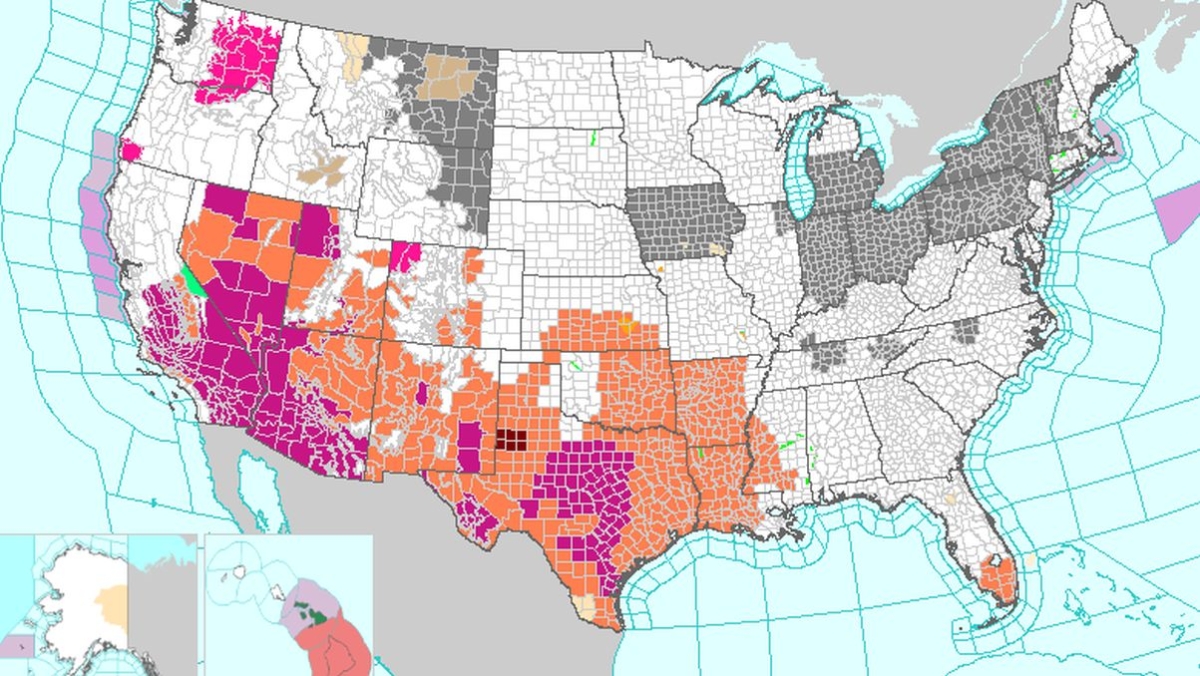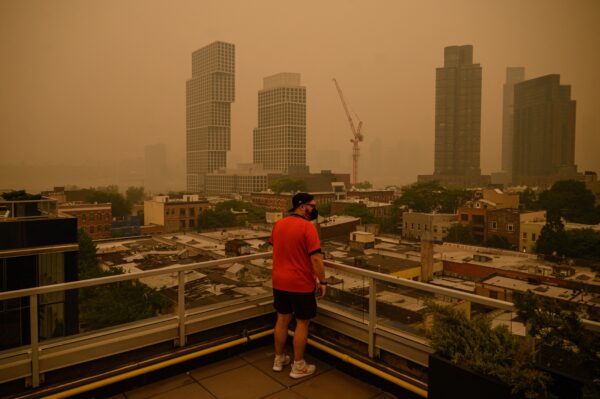


Canadian wildfire smoke is again inundating parts of the northern United States this week, triggering air quality alerts spanning Montana to Vermont.
The alerts have been issued by the U.S. National Weather Service (NWS) across about a dozen states on Monday morning, according to a map provided by the agency. Some news outlets estimated that the alerts affect about 70 million people, meaning they would see poor air quality with higher particulate matter.
Major cities under air quality alerts include New York City, Detroit, Chicago, Cleveland, Pittsburgh, Buffalo, Columbus, Cincinnati, St. Louis, Philadelphia, Indianapolis, and Des Moines. According to monitoring service IQAir, Washington, Detroit, New York City, and Chicago as of Monday morning had some of the worst air quality in the world. Washington, D.C., however, wasn’t under an NWS air quality alert.
The U.S. Environmental Protection Agency’s AirNow air quality page rated the air in Chicago as “unhealthy” as of 10 a.m. CDT on Monday. And in Michigan, state environmental officials said the air “is unhealthy for sensitive groups.”
The Michigan Department of Health and Human Services advised people in the state to check the Air Quality Index regularly to decide if they should be participating in outdoor activities.
“Air Quality alerts are in place for much of the Great Lakes, Midwest, and northern High Plains,” the NWS said. “This is due to the lingering thick concentration of Canadian wildfire smoke over these regions. While the concentration of smoke in the atmosphere should begin to wain by Monday, there is still enough smoke to support unhealthy air quality that is unhealthy for sensitive groups in parts of these regions into the start of the upcoming week.”
It noted Monday, too, that the “wildfire smoke will remain in the picture through Tuesday as northwesterly winds aloft that originate out of the Canadian Prairies continues to direct more smoke into the Lower 48,” referring to the contiguous United States.
“There are Air Quality alerts issued for areas the include the northern High Plains, the Midwest, Great Lakes, central Tennessee and North Carolina, and into the Northeast where higher concentrations of smoke will result in unhealthy air quality for sensitive groups. Smoke concentrations should diminish over parts of the Heartland on Tuesday,” it added, “but may still cause poor air quality along the East Coast.”
Meanwhile, New York Gov. Kathy Hochul stated Sunday that poor air from the wildfires in Canada was expected to hit parts of New York state again Monday, mostly in northern and western parts of the state. She said the air quality index was forecasted to be 100 to 150 in those areas, when 0 to 50 is the norm. Her comments came at a news conference about heavy rain and flooding.
“[I]f you start looking up tomorrow, you’re going to see a similar situation to what we had a couple weeks ago, because of the air quality degradation resulting from the wildfires in Canada. So, we’re going to have air quality issues once again,” Mrs. Hochul said during the news conference.
Previously, health officials have recommended people to wear a mask, stay indoors, and keep indoor air clean.
Officials in Canada said that the Armed Forces and Canadian Coast Guard will be sent to British Columbia, located in western Canada, after the province submitted a request for government assistance that was approved by the government. As of late Sunday, there were about 883 active fires across Canada, of which 581 were not in control, according to a map provided by the Canadian Interagency Forest Fire Center, and most of the fires that are out-of-control are located in British Columbia, Alberta, and Quebec.
A firefighter died while combating a fire in the Northwest Territories, near the border with British Columbia, according to a statement issued by the local government on Sunday. It did not identify the firefighter or the cause of death.
“The news from British Columbia—that one of the firefighters bravely battling wildfires has lost her life—is heartbreaking. At this incredibly difficult time, I’m sending my deepest condolences to her family, her friends, and her fellow firefighters,” Canadian Prime Minister Justin Trudeau said on Twitter. British Columbia Premier David Eby noted that the firefighter’s death was “tremendous loss for everyone involved.”
Some of the fires were triggered about a week ago by lightning strikes, causing more than 100 new wildfires in British Columbia. Officials had warned of challenging conditions, with lightning storms forecast for most of the week and above-average temperatures throughout the central interior of the province.
Last week, the Canadian Forest Service said wildfires raging across Canada had already broken records for total areas burned in recorded history, the number of people forced to evacuate their homes, and the cost of fighting the blazes.
The Associated Press contributed to this report.

